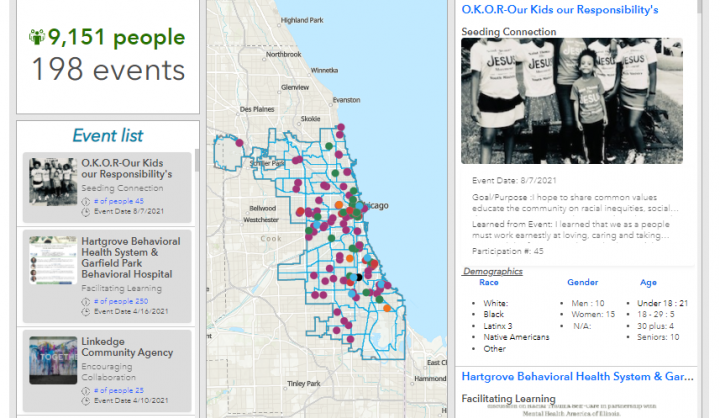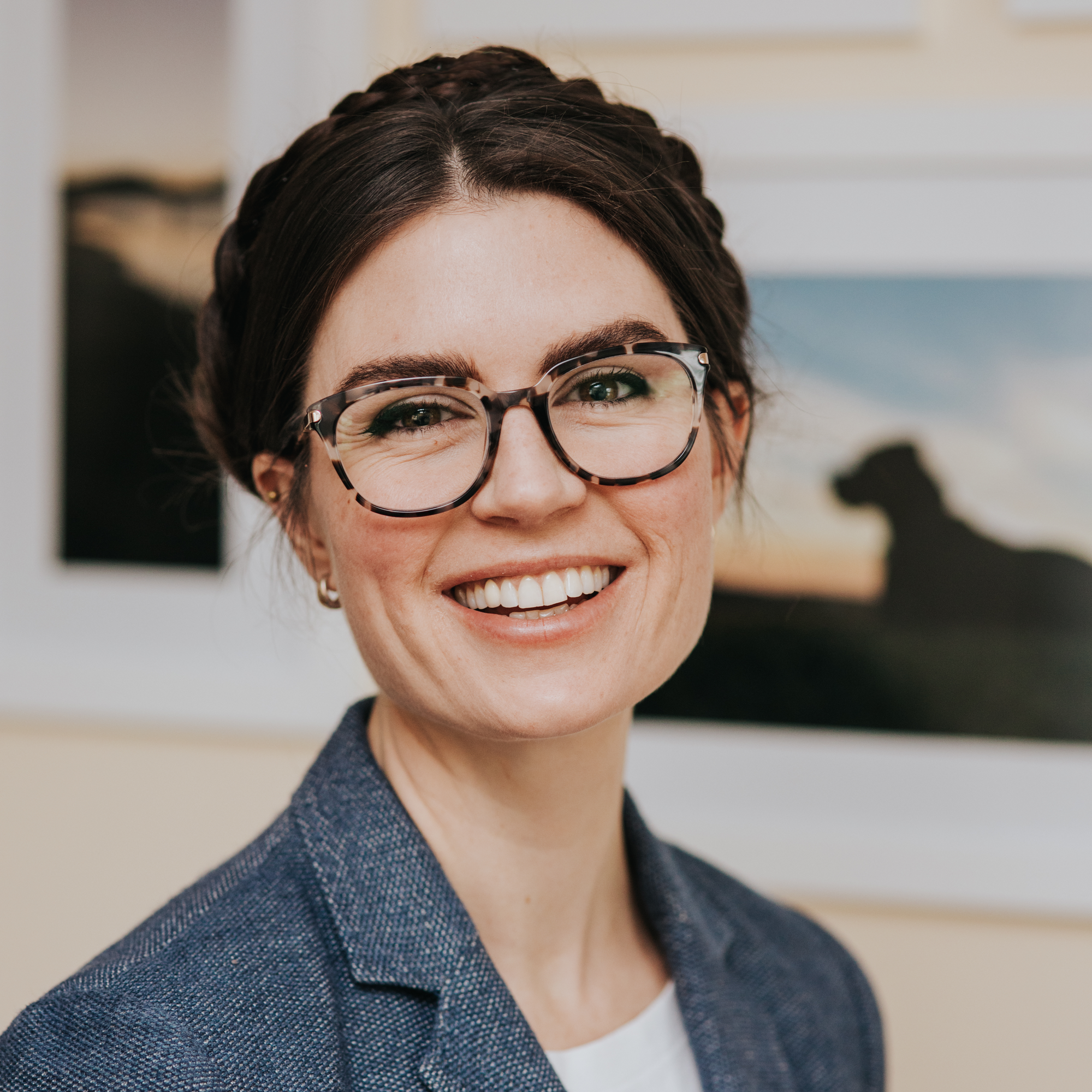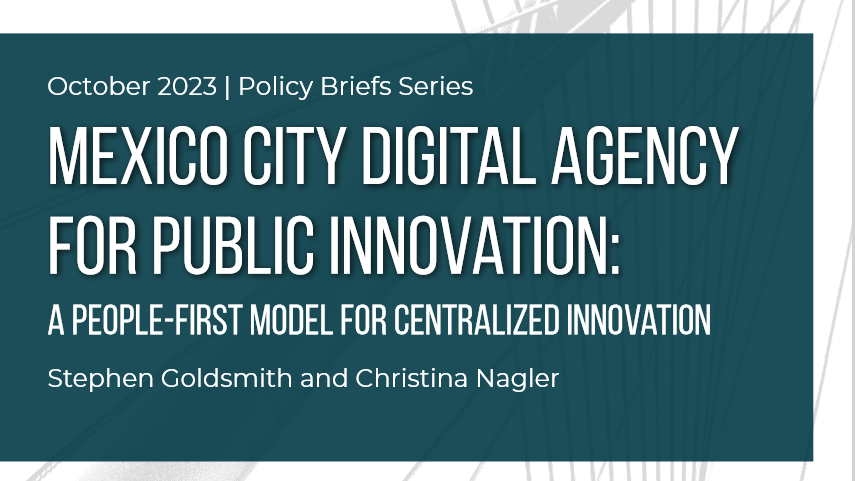
- June 4, 2021
- Equity
“I think equity work is innovation work. We are necessarily asking ourselves to rethink how systems and processes work, and we want to rethink that in alignment with community experiences and perspectives of what the problems are, and what the solutions should be.”
-Candace Moore, Chicago’s Chief Equity Officer
Chicago’s Office of Equity and Racial Justice was established in 2019 to center equity in the city’s service delivery and distribution, and to combat the “tale of two cities” narrative that has plagued the city for generations. The Office is charged with guiding and building the way the city operationalizes equity, rooting it into how the government does business. Chief Equity Officer Candace Moore sees her role as supporting the entire government enterprise in developing the skill sets, knowledge, and strategies that will promote equity, and helping the departments implement these ideas through policy and practice. This whole endeavour will reform potentially biased practices and bake in equity, all with a base of equitable and transparent data that will track and measure progress along these goals.
One of the first major projects that Moore organized was the Together We Heal initiative, a “journey aimed at building racial healing across Chicago.” Pre-pandemic, Moore was establishing the Office, building capacity, and starting to train other departments. However, once COVID-19 hit in early 2020, all plans for departmental and community engagement had to change. Ever adaptable, Together We Heal was born in part from COVID restrictions and from the need for a rapid, racially-sensitive response to the pandemic and surging racial reckonings.
As Americans began to fully confront the effects that past harm had on present mental and physical health, Moore began to consider what community healing would look like. While the pandemic wore on and many cities experienced civil unrest, she wanted to understand how to move forward in a safe, healing way and how to “marry the notion of community healing to institutional transformation.”
“A lot of people were feeling very stuck,” said Moore. “There was a lot happening to us, so how were we going to absorb the moment and learn from our experiences at a community level, and how do those insights at a community level change fuel change processes?” Together We Heal is a multi-pronged, strategic approach to these questions, which aims to support healing in these communities, lead public and collective reckoning, and implement institutional transformation.
The Office called on residents to participate in a Racial Healing Challenge and participate in the conversations and community events that were being held all over Chicago. “People were doing these things all across the city,” Moore said, “but having limited physical interactions and staying at home, we realized it could be really supportive to the work to create a digital space.” Moore and her team decided that an interactive healing map, that spotlights community work on racial equity, would be an important way for the city to elevate other voices and literally “put them on the map.”

All of the map input came from people in the communities. Through outreach conducted by Moore and her team, local community leaders and organizations spread word about the map. Despite some people who were reluctant to engage with the city on issues around racism, many residents were receptive to the outreach and nearly 200 events — that reached about 10,000 residents — were uploaded. The map was built by the city’s internal IT team, with some moderate technical support from ESRI.
One of Moore’s favorite things about the map is how engaging it is for users, as Chicago residents can see what their communities are doing in real time, and how their contribution is impacting the bigger conversation. With the public-facing map populated, the Office also turned inward to work with other city departments. According to Moore, she “asked the departments to engage in healing conversations,” which could be guided by the Together We Heal Candid Conversations toolkits.
The Racial Healing Challenge culminated in a virtual Racial Healing Summit in January 2021, which told the story of the Office of Equity and Racial Justice and the work of the greater Chicago community. There was a morning session that highlighted the work of the Office and the progress made in the Challenge, plus two different opportunities for public feedback. One way was by putting out a public survey, built in partnership with ESRI, which captured public sentiment data that was correlated to the respondents’ geographical locations. The second opportunity was during the afternoon portion, when 40 working groups gave their perspective of how Chicago should define equity and how to build a year of healing in the future. Overall, the Office was able to collect useful input, including the ability to see where gaps existed in the data.
Long term, Moore and her team are working on an equity statement of principle for the whole city, to have a consistent definition of equity and shared principles. This statement can then be used in service of all city planning efforts, serving as a foundation for projects around transportation, housing, and public safety. Moore felt strongly that it was not her role to unilaterally develop this statement, and instead built it with input from the Together We Heal survey, virtual working sessions with the community, and conversations with other staff. She hopes that, once finished, this statement will be passed via resolution.
The Office is also working on a full Year of Healing for the city, designed to move forward over the next year and into 2022. The year would be for all residents, including the residents who are also city employees; all city staff must be residents of the city, and therefore the Office finds significant crossover between internal work and external community needs. As more departments have been coming to Moore and asking how to think about equity, she is guiding them as both community members and public servants to build their own capacity to understand equity and do the work, in order to meet the interconnected government and community needs.
For Moore, despite the constraints of COVID-19 and social distancing, she felt that the Racial Healing Challenge successfully used the available data tools and technology solutions “to ultimately create an environment where people could engage around a question or a policy that you’re trying to get at, and still have an experience around it.” As vaccinations increase and in-person gatherings are once again possible, Moore and her team are primed and ready to continue on their mission to “re-think, re-analyse, and re-view” the work — and, by extension, the idea of “innovation work as equity work” in city services.




